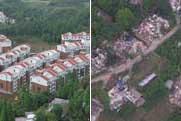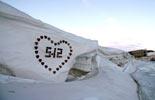World
U.S. shuttle Discovery leaves space station for home
Altogether, the station's arrays can generate as much as 120 kilowatts of usable electricity -- enough to provide about 422,800-square-foot (260 square meters) homes with power. The arrays will provide the electricity to fully power science experiments and support the station's expanded crew of six in May.
The truss is a high-tech girder structure made up of 11 segments. It provides the backbone for the station, supporting the U.S. solar arrays, radiators and other equipment. After S6 installation, the truss was 335 feet (102 meters) long.
The flight also replaced a failed unit for a system that converts urine to potable water.
Discovery is bringing back five months' worth of experiments from the space station. It is also returning four to five liters of recycled water made from the astronauts' urine and sweat. NASA wants to make sure the water is safe before space station astronauts start drinking it there.
Discovery, with seven astronauts aboard, was launched into space on March 15. It is scheduled to land at the Kennedy Space Center in Florida on March 28.
Editor:Zhang Pengfei



